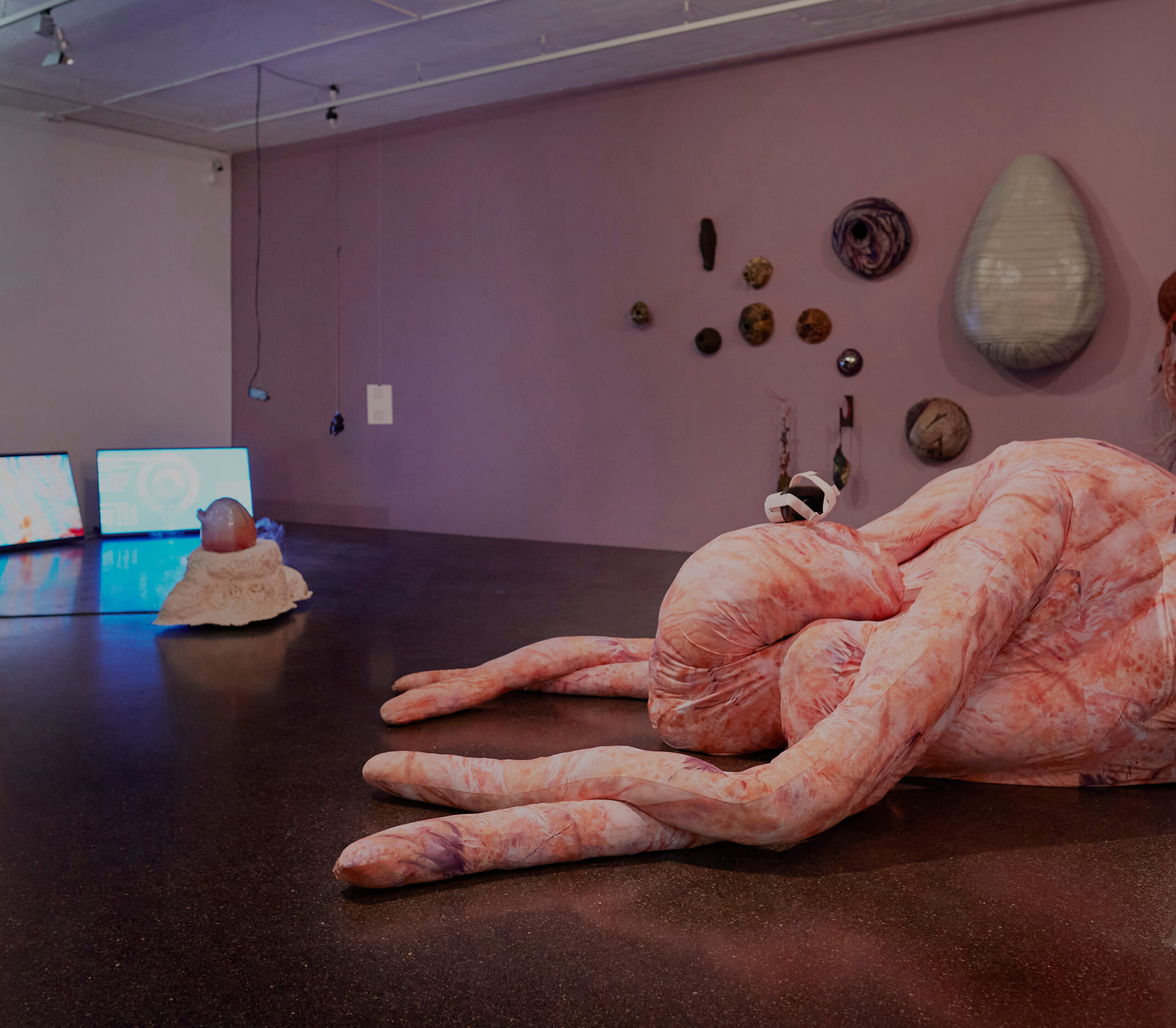 Exhibition View AIA Space, 2023, with Ipseria, Isabell Bullerschen, Pedro Wirz, Untitled (Nests)/ “Um Peso, Uma Medida”.
Exhibition View AIA Space, 2023, with Ipseria, Isabell Bullerschen, Pedro Wirz, Untitled (Nests)/ “Um Peso, Uma Medida”.
The exhibition A City Beyond maps out a future of coexistence between humans, non-humans, and material processes by exploring the value of collaboration and mixture as essential tools for mutual survival in the face of climate change. With more than half of the world’s population living in urban environments, the city of tomorrow demands new forms of communication able to inspire empathy as a radical tool for fostering care.
The exhibition’s landscapes are a combination of real and fictional narratives that intersect and cross-fertilize through transdisciplinary exchange. The metamorphic processes undergone by the works, their viewers, and their productions are understood as part of circular processes that blend biological, technological, and social elements to explore new ways of co-inhabiting common spaces.
The exhibition marks the beginning of the year-long Co-habitations project, which explores how human and non-human species will want to live together in a hundred years’ time.
Curated by Martina Huber and Violeta Burckhardt
March 14 to May 27, 2023
With: Isabell Bullerschen, Pedro Wirz, Marc Lee, SUPERFLEX, Violeta Burckhardt, Architecture for Refugees, Mira Hirtz, Studio Eidola.
Next event on May 10, 2023, 6:45 pm: Art + Science talk with artist Isabell Bullerschen, microbiologist Jeremy Wong and transmedia artist Vanessa Bosch. More info here.
RSVP: welcome@weareaia.art
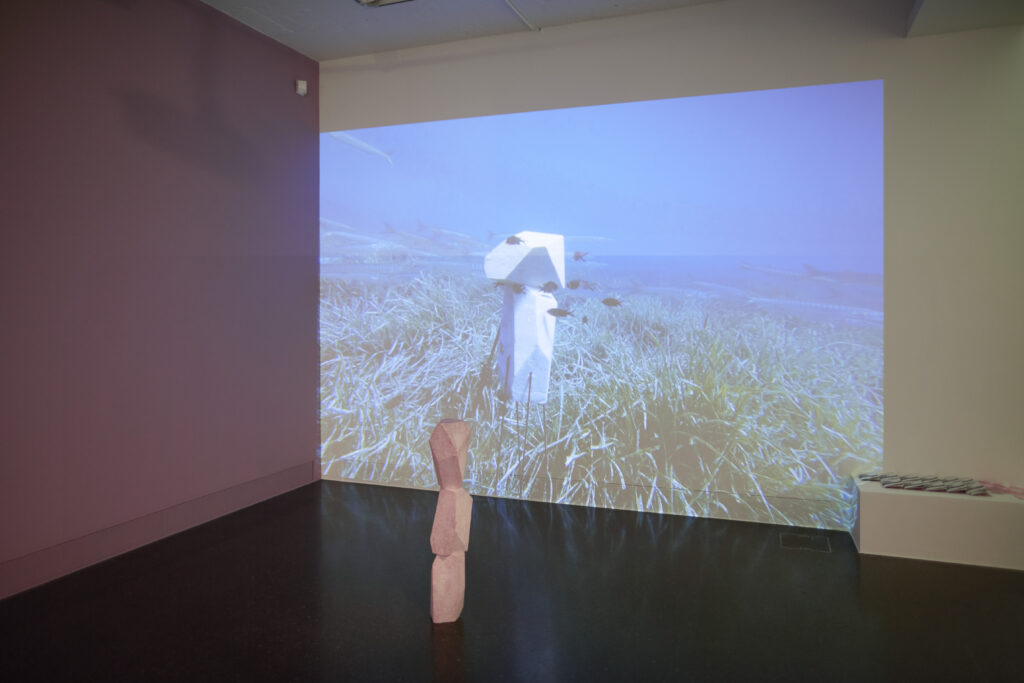 SUPERFLEX, Interspecies Intimacies, 2023 in collaboration with Alex Jordan and Anja Wegner, Photo: Carla Schleiffer
SUPERFLEX, Interspecies Intimacies, 2023 in collaboration with Alex Jordan and Anja Wegner, Photo: Carla Schleiffer
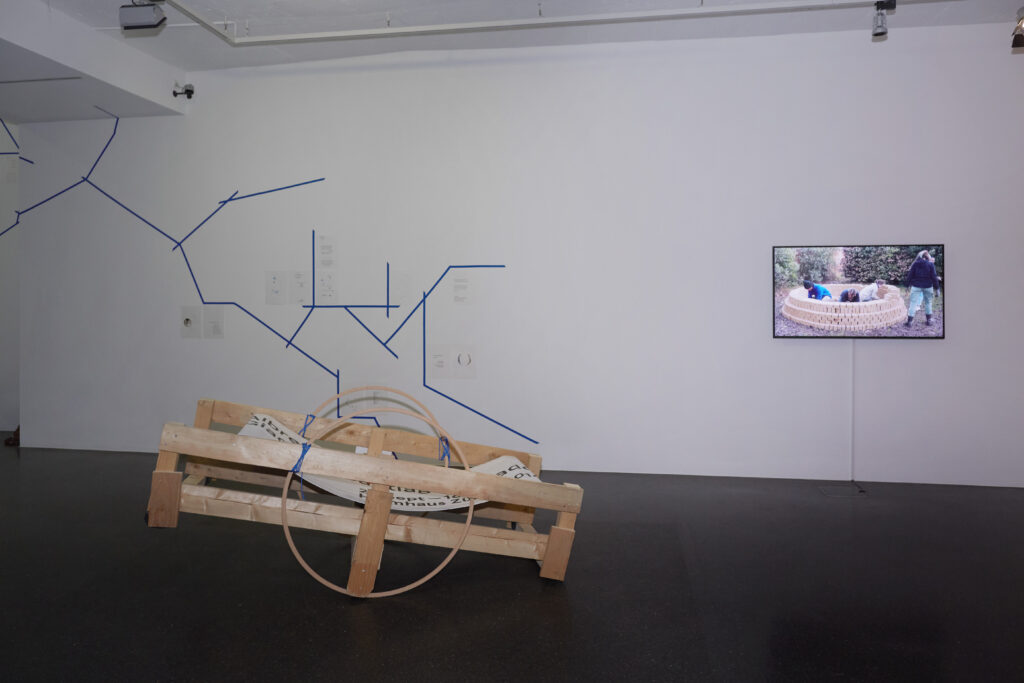 Architecture for Refugees, Re-balance, 2022, AIA Space 2023, Mira Hirtz, Soma City, Photo: Carla Schleiffer.
Architecture for Refugees, Re-balance, 2022, AIA Space 2023, Mira Hirtz, Soma City, Photo: Carla Schleiffer.
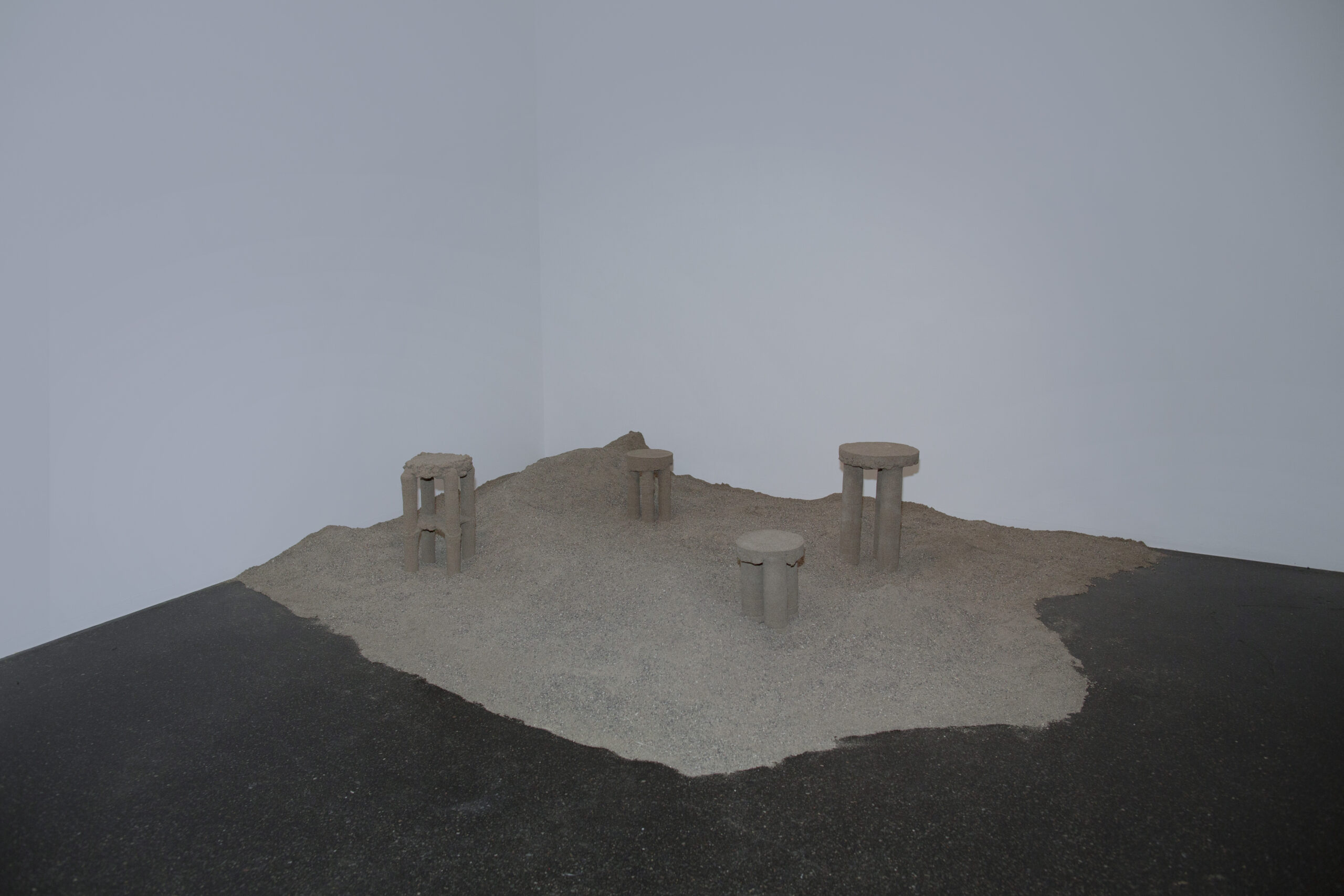
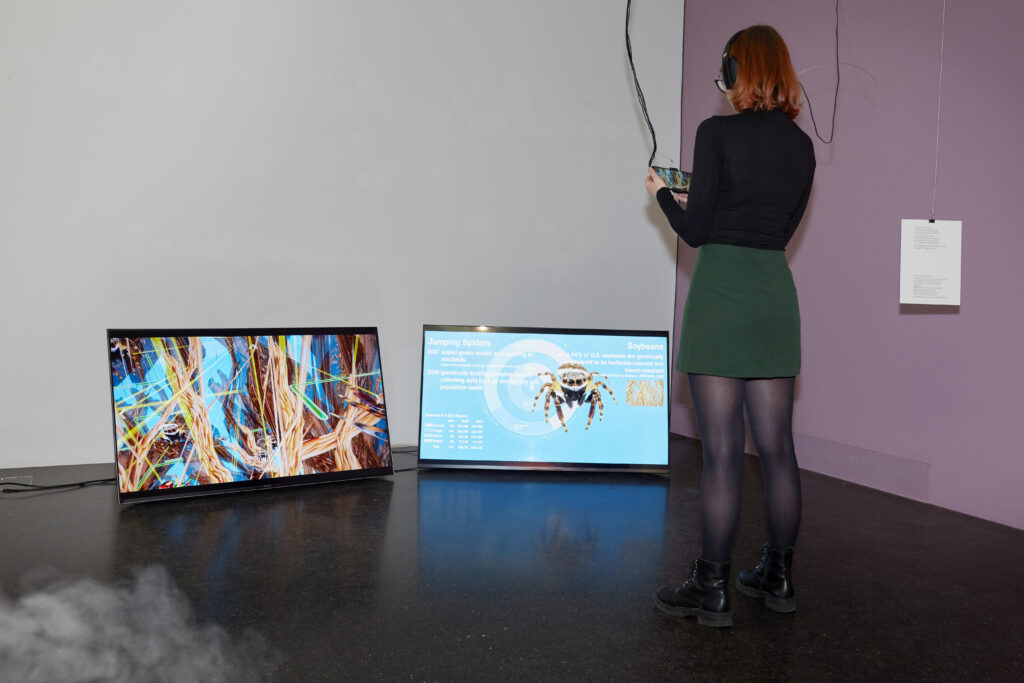 Marc Lee, CAON—Control and Optimize Nature, 2023, Photo: Carla Schleiffer
Marc Lee, CAON—Control and Optimize Nature, 2023, Photo: Carla Schleiffer
Pedro Wirz, Untitled (Nests)/”Um Peso, Uma Medida”
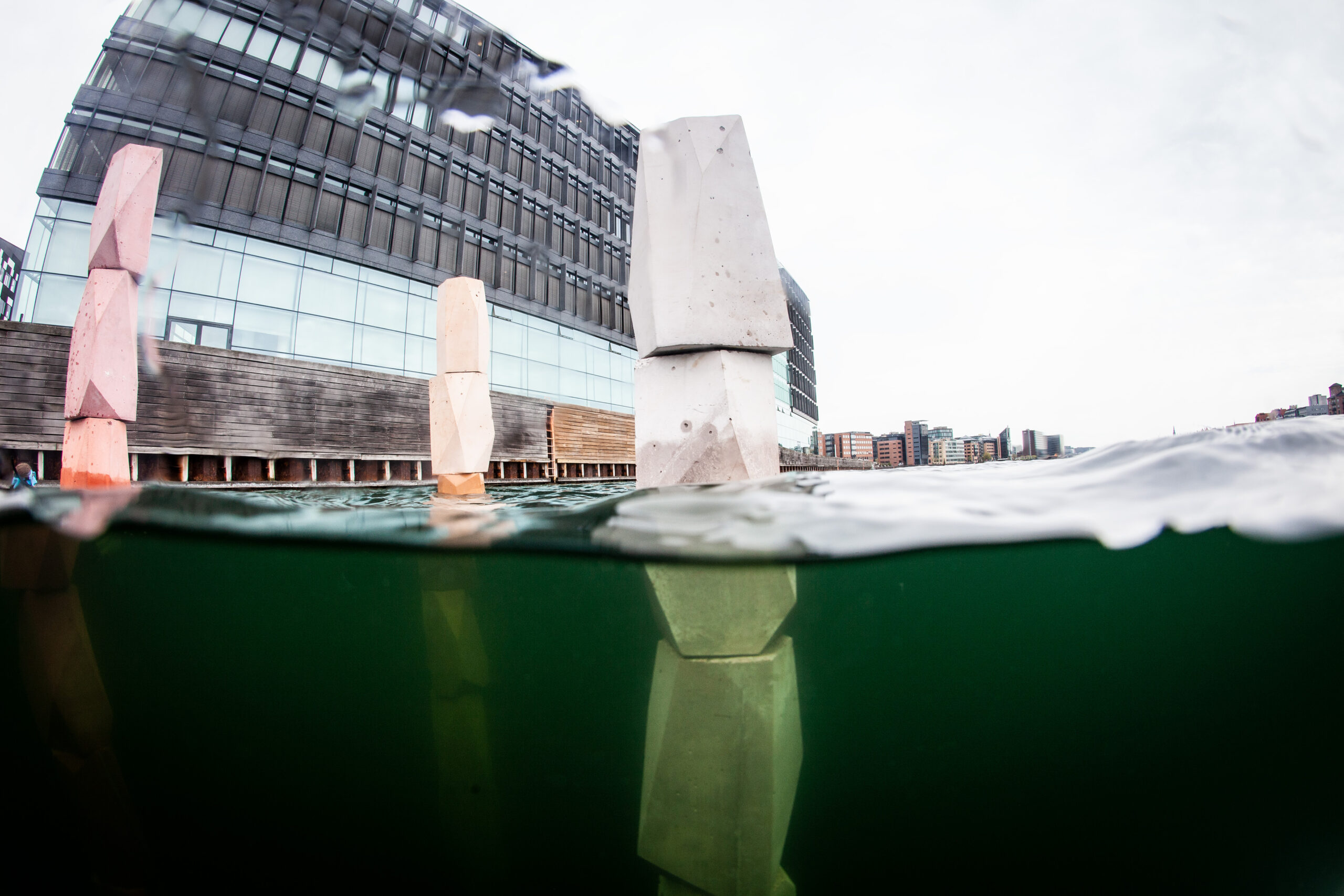
SUPERFLEX, As Close As We Get, 2022. As Close As We Get, 2022 is realized in collaboration with DTU Sustain and By & Havn. The project was supported by the Danish Art Council. Photo: Lars Hestbæk